Geotextiles are versatile construction materials that can be used for a variety of purposes, such as erosion control and soil reinforcement. There are a variety of geotextiles available on the market, each with its own advantages and disadvantages. The three most common types of geotextiles are woven, non-woven, and needle-punched. Woven geotextiles are strong and durable, making them ideal for high-stress applications such as reinforcing soil behind retaining walls. Non-woven geotextiles are less strong but more permeable, making them ideal for drainage applications. Need-punched geotextiles are somewhere in between, offering a balance of strength and permeability. When choosing a geotextile for your project, it’s important to consider the specific requirements of the application. For most applications, any of the three types of geotextiles will work well. However, for some applications, one type may be better suited than the others. Consulting with a knowledgeable expert can help you choose the right geotextile for your project.
Woven Geotextile
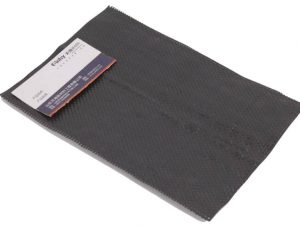
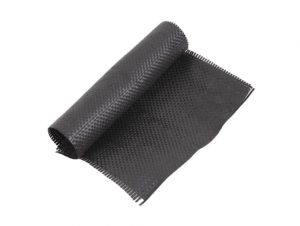
What Are Woven Geotextiles?
Woven geotextile is made from synthetic fibers such as polyester or polypropylene that are woven together into a strong fabric-like material. It’s commonly used in landscaping and construction projects for erosion control and soil stabilization. Woven geotextile fabrics have excellent tensile strength, meaning they will not easily tear or stretch even under high pressure. This makes them ideal for use in areas where there is high water flow such as embankments, riverbanks, and shorelines.
Benefits of Woven Geotextiles
-
Strength and Durability
Woven geotextiles are known for their exceptional strength and durability. The combination of strong synthetic fibers makes the fabric resistant to tears, punctures, and other damage caused by environmental conditions such as extreme heat or cold. This makes it ideal for use in areas where soil stabilization is important, such as roadways or embankments. Additionally, the fabric also offers great resistance to ultraviolet radiation which helps it last longer when exposed to direct sunlight over an extended period of time.
-
Filtration
The weave pattern of woven geotextiles gives them excellent filtration properties. This means that they can be used in drainage systems to filter water while still allowing air and water vapor to pass through. The fabric acts as a barrier against large particles while small particles pass through easily—this helps prevent clogging or buildup in the system over time. Additionally, woven geotextiles can also be used for soil separation which helps reduce intermixing between different types of soils during construction projects.
-
Cost-Effectiveness
Another major benefit of using woven geotextiles is their cost-effectiveness compared to traditional materials like concrete or asphalt. Since they are lightweight and easy to install, they require less labor and lower installation costs than traditional materials would require—this makes them ideal for large-scale construction projects where budgets are tight but quality results are needed quickly. Additionally, woven geotextiles also have a longer lifespan than most conventional civil engineering materials which means fewer replacement costs down the line.
To conclude, woven geotextiles offer many advantages to civil engineering projects due to their strength and durability combined with their cost-effectiveness compared to more traditional materials like concrete or asphalt. They provide excellent filtration properties which help keep drainage systems clear from clogs or buildup over time and can also be used for soil separation during construction projects. As a wholesaler of these fabrics, understanding the uses and benefits of woven geotextiles will help you better serve your customers who rely on these fabrics for their civil engineering projects.
Non-Woven Geotextile
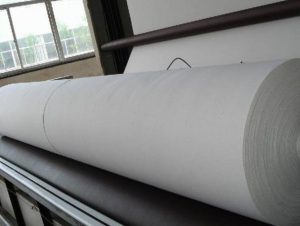

What Are Non-Woven Geotextiles?
Non-woven geotextile fabric is made from polypropylene fibers that are bonded together with heat or chemical treatments. Unlike woven fabrics, non-woven fabrics do not have any interlocking fibers and instead rely solely on the bonding process to give them strength and durability. Non-woven fabrics tend to be more flexible than woven fabrics which makes them well-suited for use in drainage applications where flexibility is needed such as underneath driveways or parking lots. They also work great for separating soils and retaining moisture in garden beds or flower beds.
Benefits of Non-Woven Geotextiles
-
Flexibility
The most obvious benefit of using non-woven geotextiles is their increased flexibility compared to traditional woven fabrics. This makes them easier to install, as they can be laid down over uneven surfaces much more easily than woven fabrics. Additionally, since the fibers are not woven together, there’s no need for stitching or seams which can potentially fail over time. This increases the longevity of the material and minimizes maintenance costs down the line.
-
Strength
Unlike traditional fabrics, which are made from interlocking fibers, non-woven geotextiles are made from randomly oriented fibers that are bonded together. This gives the fabric superior strength and durability, making it well-suited for applications where extra support is needed. In particular, non-woven geotextiles are often used in erosion control applications or drainage systems. The fabric helps to hold the soil in place, while the pores allow water to pass through. As a result, non-woven geotextiles can play an important role in preventing soil erosion and protecting against water damage.
-
Resistant To UV Rays and Chemicals
UV rays and chemicals can cause serious damage to many materials, including fabrics. However, non-woven geotextiles are designed to resist both of these substances. The UV-resistant properties of non-woven geotextiles come from the fact that they are made of synthetic materials that are not susceptible to sunlight degradation. In addition, the synthetic fibers used to make non-woven geotextiles are also resistant to most chemicals. This makes non-woven geotextiles an ideal choice for applications where resistance to UV rays and chemicals is required.
-
Lower Cost
In order to save money on many projects, using a non-woven geotextile is a reasonable cost. This is due to the wide variety of benefits that come along with using this type of fabric. In terms of erosion control, this fabric is key in many stabilized construction projects. Furthermore, because the fabric is pervious, it allows for gas and water exchange. Additionally, it provides strength and stability to the project while also being flexible. All of these factors play into the reasonable cost of using a non-woven geotextile. Without this fabric, the project would likely be more expensive and may not have the same level of success. reverberate Throughout all phases of the project, from design to implementation to maintenance, using a non-woven geotextile will continue to be a reasonable cost for all involved.
In a word, non-woven geotextiles offer numerous benefits when compared to traditional woven fabrics including increased flexibility, better strength, and durability, greater resistance against UV rays and chemicals, as well as lower material costs overall due to their lack of stitching or seams. If you’re looking for an alternative material for your next construction project that offers all these advantages and more, look no further than non-woven geotextiles! As a wholesaler/distributor it is important that you understand why this product should be considered by your customers so that you can provide sound advice on its usage in any given situation!
Needle Punched Geotextile
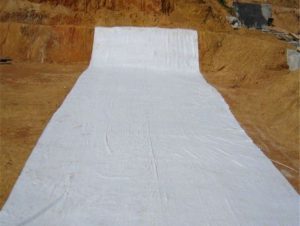
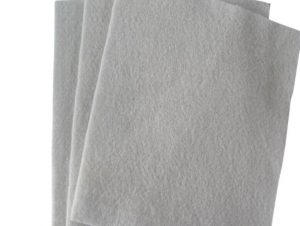
Also known as Knitting Geotextiles, needle-punched geotextiles are one of the most versatile and reliable materials used in civil engineering projects like road construction, soil stabilization, and flood control. This type of geotextile is made by interlocking fibers with a needle-punching process, which creates a strong and durable material that can withstand extreme temperatures, moisture, and other environmental factors.
What Are Needle-Punched Geotextiles?
Needle-punched geotextiles are fabrics composed of synthetic or natural fibers that have been interlocked together using needles. The needles break open the individual fibers which help to create a dense fabric with minimal air spaces between the fibers. This type of fabric is often used as a filter or separator in civil engineering projects like drainage systems, soil reinforcement systems, and erosion control applications. The needle-punching process also allows for the introduction of additional layers such as sand or gravel that can further enhance the material’s performance in specific applications.
How Are Needle-Punched Geotextiles Made?
The needle punching process begins with the selection of raw materials such as polyester or natural fibers like jute or cotton. These materials are then cut into thin strands which can range from 1 to 10 mm in thickness depending on their intended use. Once cut, these strands are placed onto a machine known as a carding machine where they are combed into a uniform layer before being fed into another machine called a needle lacer where hundreds of needles punch through the material at high speed to interlock the individual fibers together. Finally, the material is put through an oven to set the interlocking pattern before being rolled up for use in various applications.
Benefits of Using Needle-Punched Geotextiles
-
Strength and Durability
Needle-punched geotextiles are made by punching thousands of small needles through a sheet of fabric. This creates a strong, durable fabric that can withstand a lot of abuse. Geotextiles are often used in construction and engineering projects, as they can reinforce gravel roads, hold back soil, and prevent erosion. needle-punched geotextiles are also used in agricultural applications, such as agricultural drainage and weed control. In addition to their strength and durability, needle-punched geotextiles are also permeable, meaning they allow water to pass through while still retaining soil and other particles. This makes them an ideal choice for many applications where water management is a concern.
-
Light Weight
Weeds are a common problem in gardens and landscapes, and controlling them can be a difficult and time-consuming task. Traditional methods of weed control, such as tilling or spraying herbicides, can be disruptive to the existing vegetation and soil. Additionally, these methods often require the use of heavy machinery, which can be impractical or prohibitively expensive. Needle-punched geotextiles offer a simple and effective solution to this problem. These fabrics are made from lightweight materials that can be easily placed over existing vegetation. The fabric blocks sunlight and prevents weeds from taking root while allowing water and air to pass through. Additionally, needle-punched geotextiles are biodegradable and will eventually break down, releasing nutrients back into the soil. As a result, they offer a safe and environmentally friendly way to control weeds.
Conclusion
Knowing which type of geotextile fabric best suits your project is key to achieving successful results when using this versatile material. Woven geotextiles provide excellent tensile strength while non-woven fabrics offer increased flexibility for certain applications like drainage systems and retaining walls. Needle-punched fabrics offer both drainage capabilities and strength making them an ideal choice for many landscaping projects where both these qualities are required simultaneously. As a wholesale supplier of geotextiles, it’s important to understand these different types so you can advise your customers accordingly on which product would be best suited to their needs!


